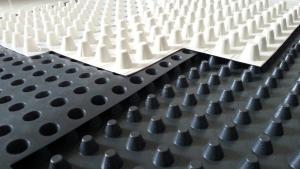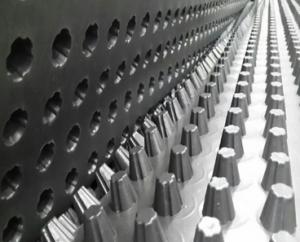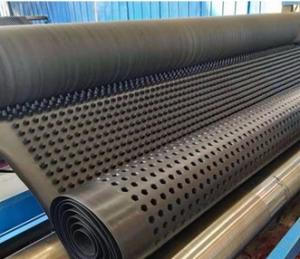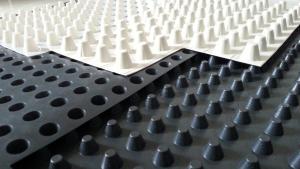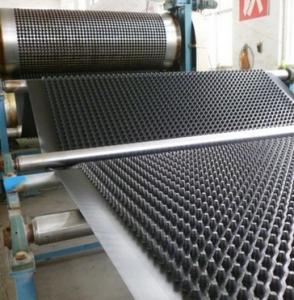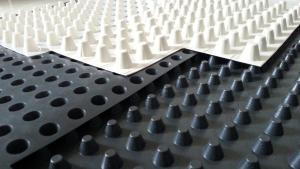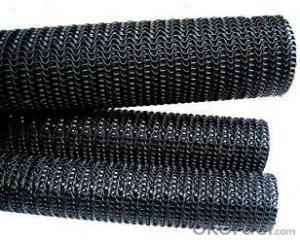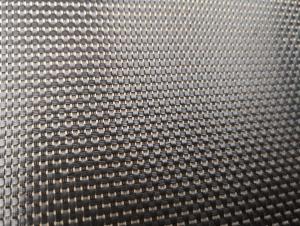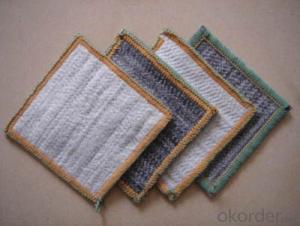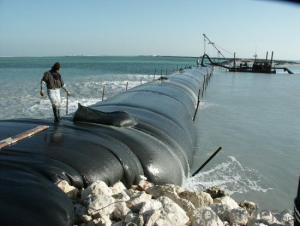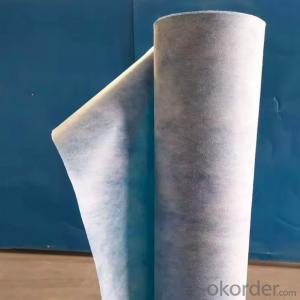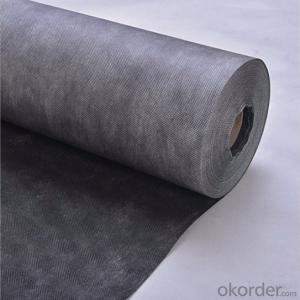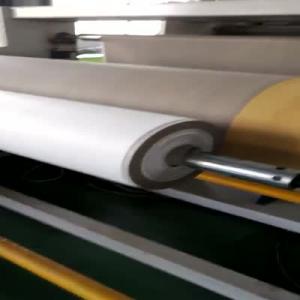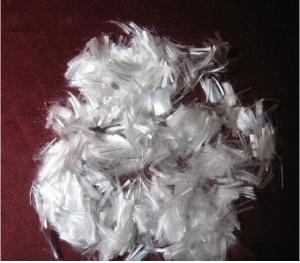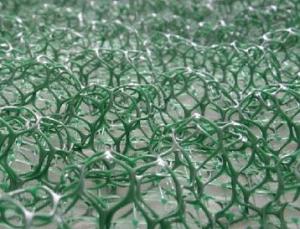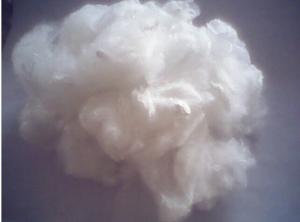HDPE waterproofing drainage board for underground garage
- Loading Port:
- Qingdao
- Payment Terms:
- TT or LC
- Min Order Qty:
- 5000 m²
- Supply Capability:
- 100000 m²/month
OKorder Service Pledge
OKorder Financial Service
You Might Also Like
HDPE waterproofing drainage board for underground garage
1. Introduction
Drainage board is made of HDPE . It's with high impact and pressure resistance which is quite durable.
The long-term pressure resistance not only can stand the weight of concrete bottom plate but also the unavoidable outside pressure and impact force during construction. For example, vehicle, worker stepping, concrete pouring impact force, etc. It can keep bottom plate undeformed for long term.
And with the help of geotextile filter layer , it ensure drainage channel is not blocked by foreign object, such as backfilling particle or concrete.
2. Application
1) Greening project: the garage roof greening, roof garden, vertical greening, football pitches, golf course, etc.
2) Municipal engineering: airport, road embankment, subway, tunnel, landfill, etc.
3) Construction: the upper or lower building foundation, inside and outside the basement wall, floor and roof, roof seepage control and heat insulation layer, etc.
4) Water conservancy project: the reservoir seepage water, reservoir, lake water seepage control, etc.
5) Traffic engineering: highway, railway basement, roadbed, dam and slope protection layer, etc.
3. Specification
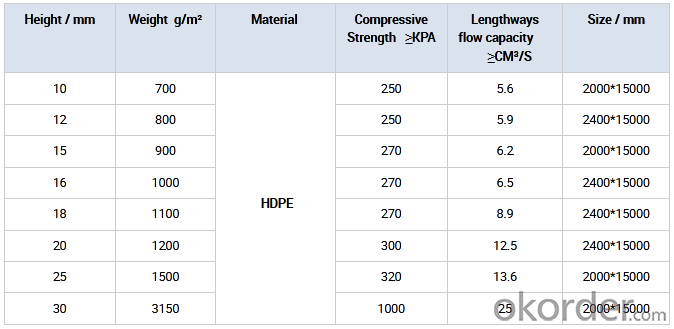
4. Pictures
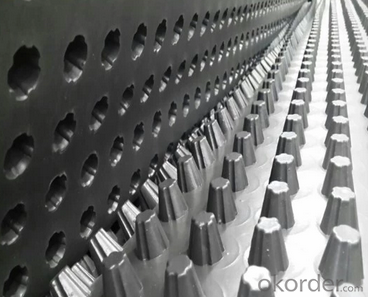
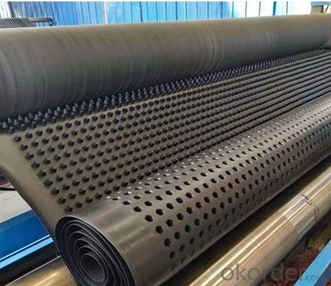

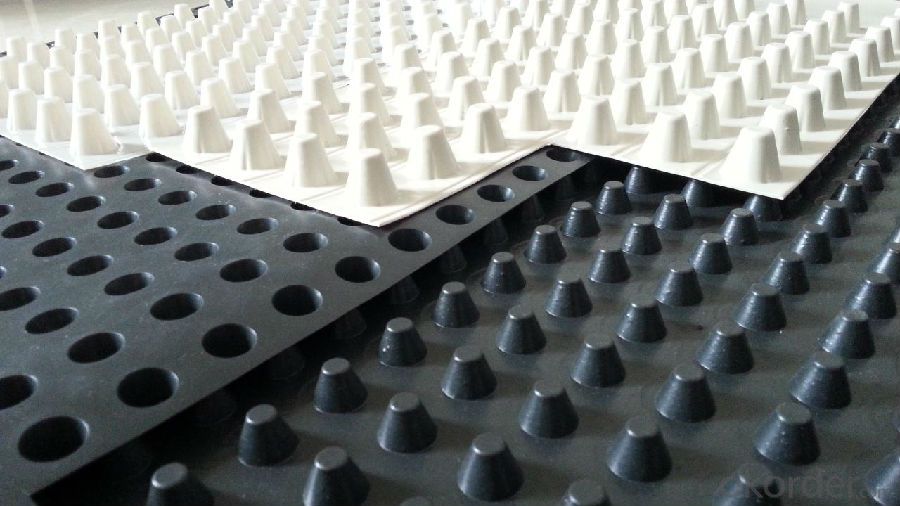
5. FAQ
Q : Why choose us ?
A: We are professional manufacturer ,and we can provide the reasonable price and good service.
Q : Do you provide sample ?Is it free or extra ?
A: Yes,we can provide free sample for quality inspection.According to our company police , you should assume the freight ,and we will return the freight if you place the order.
Q : Can you tell me your main customers ?
A: That's our customers' privacy, we should protect their information.
Q : How about the delivery time ?
A: 7 days after receive the deposit or LC at sight
- Q:How do geosynthetic clay liners prevent seepage in golf course ponds?
- Geosynthetic clay liners prevent seepage in golf course ponds by providing a barrier that effectively restricts the movement of water through the liner. The clay component of the liner swells upon contact with water, creating a low-permeability seal that prevents seepage. Additionally, the geotextile fabric on either side of the clay layer enhances the liner's durability and stability, ensuring long-term seepage control in the ponds.
- Q:What are the advantages of using geogrids for slope reinforcement?
- Geogrids offer several advantages for slope reinforcement. They provide increased stability by reinforcing the soil, preventing erosion and reducing the risk of slope failure. Geogrids also distribute loads more evenly across the slope, decreasing the potential for localized stress concentrations. Additionally, they can be easily installed and are cost-effective compared to traditional methods of slope reinforcement.
- Q:Can erosion control blankets be used on slopes?
- Yes, erosion control blankets can be used on slopes. These blankets are designed to stabilize soil and prevent erosion by reducing rainfall impact and promoting vegetation growth. They can effectively control erosion on slopes by providing immediate protection to the soil surface and allowing vegetation to establish and grow, helping to stabilize the slope and prevent further erosion.
- Q:How do earthwork products contribute to wastewater treatment systems?
- Earthwork products, such as clay, sand, and gravel, play a crucial role in wastewater treatment systems. These materials are used in various components of the system, including the construction of settling tanks and filtration beds. Clay helps to line the walls of settling tanks, preventing the leakage of wastewater into the surrounding soil. Sand and gravel are used in filtration beds to remove impurities from the wastewater as it passes through. Overall, earthwork products provide the necessary infrastructure for effective wastewater treatment, ensuring the removal of pollutants and the protection of our environment.
- Q:I am now reading materials science and engineering, when the entrance examination, then you can report civil engineering professional?
- You are cross-professional, the teacher will not like, in the school should also pay attention to. If the election hook the direction of what, it is best not to report a good school. Re-test time will be affected. General school can still be considered.
- Q:What are the advantages of using geosynthetic materials in groundwater recharge projects?
- There are several advantages of using geosynthetic materials in groundwater recharge projects. Firstly, geosynthetics act as a barrier to prevent the contamination of groundwater from pollutants or impurities present in the soil. This ensures that the recharged water remains clean and safe for consumption. Secondly, geosynthetics can enhance the efficiency of recharge systems by facilitating the uniform distribution of water and preventing excessive percolation or runoff. This helps in maximizing the amount of water that can be recharged into the groundwater reservoir. Additionally, geosynthetics are highly durable and resistant to degradation, making them a cost-effective solution for long-term groundwater recharge projects. Lastly, these materials are flexible and easy to install, allowing for customization and adaptability to different site conditions, which can significantly reduce construction time and costs.
- Q:Can geosynthetics be used for lining fish ponds?
- Yes, geosynthetics can be used for lining fish ponds. They provide an effective barrier to prevent seepage and leakage, ensuring the containment of water within the pond. Geosynthetics also offer benefits such as durability, flexibility, and resistance to various environmental conditions, making them suitable for fish pond linings.
- Q:How do earthwork products contribute to riverbank erosion prevention?
- Earthwork products contribute to riverbank erosion prevention by providing structural support and stability to the riverbank. These products, such as retaining walls or riprap, can help to control and redirect the flow of water, preventing it from eroding the soil and destabilizing the riverbank. Additionally, earthwork products can help to reinforce the slope of the riverbank, reducing the likelihood of erosion and maintaining its integrity. Overall, these products play a crucial role in protecting riverbanks from erosion and preserving the natural environment.
- Q:How do geosynthetic liners prevent seepage in wastewater treatment plants?
- Geosynthetic liners prevent seepage in wastewater treatment plants by acting as a barrier between the wastewater and the surrounding environment. These liners, made of materials like geomembranes and geotextiles, are impermeable or have low permeability, effectively preventing the escape of contaminants into the soil or groundwater. Additionally, they provide stability to the structure, reducing the risk of leaks and maintaining the overall integrity of the wastewater treatment plant.
- Q:How are geotextile tubes used in shoreline restoration projects?
- Geotextile tubes are commonly used in shoreline restoration projects as a method for erosion control and sediment management. These tubes are filled with sand, soil, or other materials and placed along the shoreline to create barriers that prevent further erosion and stabilize the area. They act as a buffer against wave energy and can help build up the shoreline, creating a more natural and sustainable environment. Additionally, geotextile tubes can be used to trap sediment and filter water, improving water quality and promoting the growth of vegetation.
1. Manufacturer Overview |
|
|---|---|
| Location | |
| Year Established | |
| Annual Output Value | |
| Main Markets | |
| Company Certifications | |
2. Manufacturer Certificates |
|
|---|---|
| a) Certification Name | |
| Range | |
| Reference | |
| Validity Period | |
3. Manufacturer Capability |
|
|---|---|
| a)Trade Capacity | |
| Nearest Port | |
| Export Percentage | |
| No.of Employees in Trade Department | |
| Language Spoken: | |
| b)Factory Information | |
| Factory Size: | |
| No. of Production Lines | |
| Contract Manufacturing | |
| Product Price Range | |
Send your message to us
HDPE waterproofing drainage board for underground garage
- Loading Port:
- Qingdao
- Payment Terms:
- TT or LC
- Min Order Qty:
- 5000 m²
- Supply Capability:
- 100000 m²/month
OKorder Service Pledge
OKorder Financial Service
Similar products
New products
Hot products
Hot Searches
Related keywords
